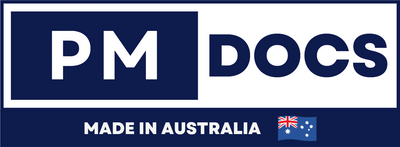What Is ISO 27001 Certification In Australia?
Navigating The Digital Landscape: Your Guide To ISO 27001 Certification In Australia
In today's interconnected world, information is a critical asset, and its protection is paramount. Australian businesses, regardless of size or industry, face a relentless barrage of cyber threats, from sophisticated ransomware attacks to data breaches targeting sensitive customer information. The Australian regulatory environment, with its robust privacy laws, also places a significant onus on organisations to safeguard data effectively.

Against this backdrop, achieving ISO 27001 certification has emerged as the global benchmark for information security. But what exactly is ISO 27001, and why is it increasingly vital for companies operating in Australia? This comprehensive guide will demystify the standard, explore its relevance Down Under, and outline the pathway to certification.
What Is ISO 27001? The Gold Standard For Information Security
ISO 27001 is an internationally recognised standard that provides a framework for an Information Security Management System (ISMS). Published by the International Organization for Standardization (ISO) and the International Electrotechnical Commission (IEC), it helps organisations manage the security of their information assets – including financial information, intellectual property, employee details, and information entrusted by third parties.
At its core, ISO 27001 specifies the requirements for establishing, implementing, maintaining, and continually improving an ISMS. It takes a systematic approach to managing sensitive company information so that it remains secure. This includes assessing and treating information security risks, ensuring business continuity, and complying with legal and contractual requirements. It’s not just about IT security; it encompasses people, processes, and technology across the entire organisation.
Why Is ISO 27001 Crucial For Australian Businesses?
The Australian business landscape presents unique challenges and opportunities that make ISO 27001 certification particularly valuable:
-
Robust Regulatory Compliance: Australia has stringent data privacy and security laws, most notably the Privacy Act 1988 and its Notifiable Data Breaches (NDB) scheme. Non-compliance can lead to severe penalties, reputational damage, and loss of customer trust. Implementing an ISO 27001-compliant ISMS helps organisations demonstrate due diligence and build a robust framework that aligns with these legal obligations. For example, the structured risk assessment and control implementation specified by ISO 27001 directly support requirements for preventing and responding to data breaches.
-
Building Trust and Enhancing Reputation: In an era where data breaches are front-page news, customers, partners, and stakeholders are increasingly scrutinising how organisations protect their information. ISO 27001 certification provides an independent, internationally recognised assurance that your organisation takes information security seriously, significantly enhancing your reputation and building critical trust.
-
Competitive Advantage and Market Access: Many large corporations, government agencies, and international clients in Australia now mandate ISO 27001 certification (or demonstrable adherence to its principles) as a prerequisite for doing business. Achieving certification can unlock new market opportunities, accelerate tender processes, and provide a significant competitive edge, especially when bidding for contracts where data sensitivity is high.
-
Proactive Risk Management: The standard forces organisations to identify, assess, and treat information security risks systematically. This proactive approach helps Australian businesses protect themselves against an evolving threat landscape, including sophisticated cyber-attacks, ransomware, insider threats, and natural disasters that could impact data centres. It moves businesses from a reactive "patch-and-pray" approach to a structured, preventative security posture.
-
Operational Efficiency and Cost Savings: While there's an initial investment, a well-implemented ISMS can lead to long-term operational efficiencies. By standardising processes, reducing security incidents, and improving incident response, organisations can minimise downtime, avoid costly remediation efforts, and potentially reduce cyber insurance premiums.
-
Supply Chain Security: As Australian businesses increasingly rely on third-party vendors and cloud services, managing supply chain risk is vital. ISO 27001 provides a framework for assessing and managing the information security risks associated with suppliers, ensuring that the entire ecosystem remains secure.
Key Components Of ISO 27001: The ISMS Framework
ISO 27001 is built around a continuous improvement cycle (Plan-Do-Check-Act) and specifies a set of controls to manage information security risks. While the core of the standard outlines the requirements for the ISMS itself, its Annex A provides a comprehensive list of suggested controls, categorised into various domains.
Here's a look at the key areas covered by ISO 27001 (referencing Annex A controls, which were updated in ISO 27002:2022 and reflected in the new ISO 27001:2022 version, though the fundamental categories remain highly relevant):
Table 1: Key Areas of Information Security Covered by ISO 27001
| Category/Domain | Description | Example Control Areas |
|---|---|---|
| A.5 Organisational Controls | Policies, roles, responsibilities, and overall governance for information security. | Information Security Policies, Roles & Responsibilities, Supply Chain Security, Threat Intelligence. |
| A.6 People Controls | Ensuring human resources security, awareness, and disciplinary processes. | Screening, Terms & Conditions of Employment, Awareness & Training, Disciplinary Process. |
| A.7 Physical Controls | Protecting the physical environment of information assets. | Physical Security Perimeters, Entry Controls, Securing Offices & Facilities. |
| A.8 Technological Controls | Implementing security measures through technology. | Malware Protection, Data Leakage Prevention, Network Security, Configuration Management, Cryptography. |
| Risk Assessment & Treatment | Identifying, analysing, and evaluating information security risks, and determining appropriate controls. | Establishing Risk Acceptance Criteria, Risk Identification, Risk Analysis, Risk Evaluation, Risk Treatment. |
| Management Review | Regularly reviewing the ISMS to ensure its continuing suitability, adequacy, and effectiveness. | Reviewing audit results, performance, changes, and improvement opportunities. |
| Continual Improvement | Actions taken to enhance the performance and effectiveness of the ISMS. | Nonconformity and Corrective Action, Preventive Action, Improvement Opportunities. |
Note: The 2022 revision of ISO 27001 consolidated the previous 114 controls in Annex A into 93 controls across these four new themes: Organisational, People, Physical, and Technological. However, the underlying principles and areas of focus remain consistent.
The ISO 27001 Certification Process In Australia
Achieving ISO 27001 certification in Australia involves a structured, multi-phase process designed to ensure that your ISMS meets the standard's rigorous requirements.
Here’s a simplified breakdown of the typical steps:
-
Phase 1: Planning and Implementation of the ISMS
-
Define Scope: Clearly define the boundaries of your ISMS (e.g., specific departments, systems, or services).
-
Leadership Commitment: Secure top management support and commitment.
-
Risk Assessment: Conduct a thorough assessment to identify information security risks relevant to your organisation and its Australian context.
-
Risk Treatment Plan: Develop and implement controls to mitigate identified risks, creating a Statement of Applicability (SoA) that justifies the inclusion or exclusion of Annex A controls.
-
Documentation: Develop essential documentation, including an Information Security Policy, risk assessment reports, procedures, and records.
-
Awareness & Training: Train employees on information security policies and their responsibilities.
-
Internal Audit: Conduct internal audits to verify that your ISMS is operating effectively and in line with ISO 27001 requirements.
-
Management Review: Conduct a formal review by top management to assess the ISMS's performance and identify areas for improvement.
-
Define Scope: Clearly define the boundaries of your ISMS (e.g., specific departments, systems, or services).
-
Phase 2: Certification Audit (by an Accredited Body)
-
Stage 1 Audit (Documentation Review): An external auditor from an accredited certification body will review your ISMS documentation to ensure it meets the standard's requirements and is ready for the next stage.
-
Stage 2 Audit (Assessment of Implementation): The auditor will then conduct a more in-depth on-site (or remote) assessment to verify that your ISMS is fully implemented, operational, and effective in practice. They will interview staff, review records, and observe processes.
- Certification Decision: If successful, the certification body will issue your ISO 27001 certificate.
-
Stage 1 Audit (Documentation Review): An external auditor from an accredited certification body will review your ISMS documentation to ensure it meets the standard's requirements and is ready for the next stage.
-
Phase 3: Maintenance and Continual Improvement
-
Surveillance Audits: Annual surveillance audits are conducted by the certification body to ensure ongoing compliance and the continuous improvement of your ISMS.
- Recertification Audit: After three years, a comprehensive recertification audit is required to renew your certificate.
-
Surveillance Audits: Annual surveillance audits are conducted by the certification body to ensure ongoing compliance and the continuous improvement of your ISMS.
List: Key Steps To ISO 27001 Certification
- Define ISMS Scope
- Conduct Risk Assessment & Treatment
- Implement Controls & Documentation
- Provide Staff Training & Awareness
- Perform Internal Audits
- Conduct Management Review
- Engage Accredited Certification Body
- Undergo Stage 1 (Documentation) Audit
- Undergo Stage 2 (Implementation) Audit
- Achieve Certification
- Maintain & Continually Improve ISMS (Annual Surveillance & Triennial Recertification)
Choosing An Australian Certification Body
When seeking ISO 27001 certification in Australia, it's crucial to select a reputable and accredited certification body. Look for bodies accredited by organisations such as the Joint Accreditation System of Australia and New Zealand (JAS-ANZ), or by internationally recognised bodies like UKAS (United Kingdom Accreditation Service) or ANAB (ANSI National Accreditation Board). Their accreditation ensures that they meet strict standards for competence and impartiality.
Benefits of ISO 27001 Certification for Australian Businesses
The investment in ISO 27001 certification yields substantial returns, particularly for businesses operating in the Australian market.
Table 2: Key Benefits of ISO 27001 Certification in Australia
| Benefit Category | Description for Australian Businesses |
|---|---|
| Enhanced Data Protection & Privacy | Demonstrates robust controls aligned with the Australian Privacy Act 1988 and the NDB scheme, mitigating risks of data breaches and associated penalties from the OAIC. Helps manage sensitive customer data, a key concern for Australian consumers. |
| Increased Customer & Stakeholder Trust | Provides independent assurance to Australian and international clients, partners, and government bodies that your information security is world-class, fostering greater confidence in your operations and data handling. |
| Improved Risk Management & Resilience | Systematically identifies, assesses, and mitigates cyber threats and other information security risks specific to the Australian threat landscape (e.g., nation-state actors, organised crime), enhancing business continuity and resilience against disruptive events. |
| Competitive Differentiator & Market Access | Essential for meeting pre-qualification requirements for Australian government contracts, large enterprise tenders, and global supply chains. Positions your business ahead of competitors by showcasing a commitment to security excellence. |
| Reduced Cyber Insurance Premiums | A well-implemented and certified ISMS can demonstrate a proactive approach to risk management, potentially leading to more favourable terms or reduced premiums for cyber liability insurance, which is increasingly vital in Australia. |
| Structured Approach to Security | Shifts security from ad-hoc responses to a systematic, managed process, leading to more efficient resource allocation, clearer responsibilities, and a culture of continuous improvement in information security across the organisation, ensuring sustained compliance and effectiveness over time. |
Conclusion
In Australia's dynamic digital landscape, ISO 27001 certification is no longer merely a nice-to-have; it's rapidly becoming a fundamental requirement for sustained success and trustworthiness. By embracing this international standard, Australian businesses can not only shield themselves from evolving cyber threats and regulatory pitfalls but also unlock new opportunities, build enduring trust with their stakeholders, and cement their reputation as responsible and secure entities.
Embarking on the ISO 27001 journey is an investment in your organisation's future, safeguarding its most valuable asset: its information. Consider taking the first step today towards building a more secure and resilient future for your Australian business.




